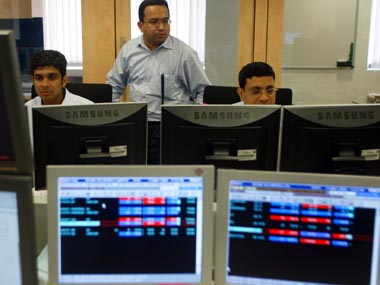The Sensex at 14,000. That’s the scary prediction made by CLSA for the benchmark index, according to this report .
The brokerage’s arguments for the prediction, which indicates a further 15-20 percent fall from current levels for the Sensex, are believed to be as follows: the Indian rupee has seen the worst devaluation since 1990-91, losing up to 20 percent. That could lead to sticky inflation numbers as imports have become more expensive in terms of rupees.
So, it’s not at all a given that the RBI will halt hiking interest rates any further, CLSA said.
[caption id=“attachment_144805” align=“alignleft” width=“380” caption=“This is not the first time CLSA has issued a negative outlook for India. Reuters”]
 [/caption]
[/caption]
High interest rates have led to a 60 percent fall in operating profits of Sensex companies between April and September, the brokerage noted.That could lead to earnings growth for the Sensex dropping to as low as 9 percent in the financial year ending March 2012.
If things don’t improve in the meantime, earnings could drop by 15 percent even in the next 12 months to March 2012, although if a miracle occurs and the situation improves, the Sensex’s earnings could actually improve by 18-19 percent.
This is not the first time CLSA has issued a negative outlook for India. In another report this month, senior economist Rajiv Malik wrote, “Government, its delivery mechanisms and their outcomes are the weakest link in India’s economic rise. Why is government delivery so shoddy in India? Why is it that Indian governments rarely deliver, fashionably and unapologetically miss targets, and cannot resolve issues before they become problems?”
In fact, poor economic governance, along with global concerns, seem to be the main reasons trapping the Sensex in a lower range, according to some top brokerages.
In a recent report on the 12 challenges that India needs to tackle to keep GDP growth above 7 percent, Citi highlighted the role the government needed to play to improve the situation in everything from urban infrastructure to employment.
Chetan Ahya, India and South East Asia economist at Morgan Stanley, also expressed similar concerns for the Indian economy in the face of another prolonged domestic slowdown.
The high-powered consumption story is also definitely fading, with most analysts expecting domestic demand to slow down due to the slow pace of economic growth, high inflation, a lack of policy breakthroughs and global economic uncertainty.
Firstpost also recently argued that the pessimism on the economy is increasingly being blamed on “ masterly inactivity ” of the government and equally, of an opposition determined not to make things happen.
After the exuberant hopes of 9 percent GDP growth at the start of this financial year, the economy is now struggling to attain a modest 6.5-7 percent growth. Even Moody’s India arm expressed disappointment today at the 6.9 percent growth in GDP for the September-ending quarter, and said it might slash its outlook for 2012 GDP growth to 6.5 percent from 7 percent.
In a note on the market outlook, BNP Paribas said: “The key question for investors is whether the worst of the headwinds are behind us. We think not.”
We agree.
)